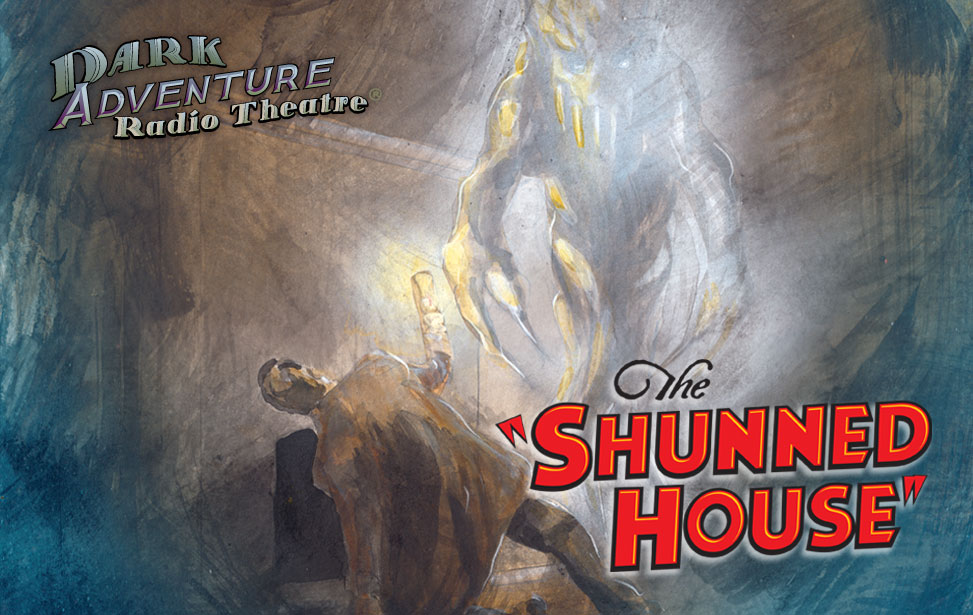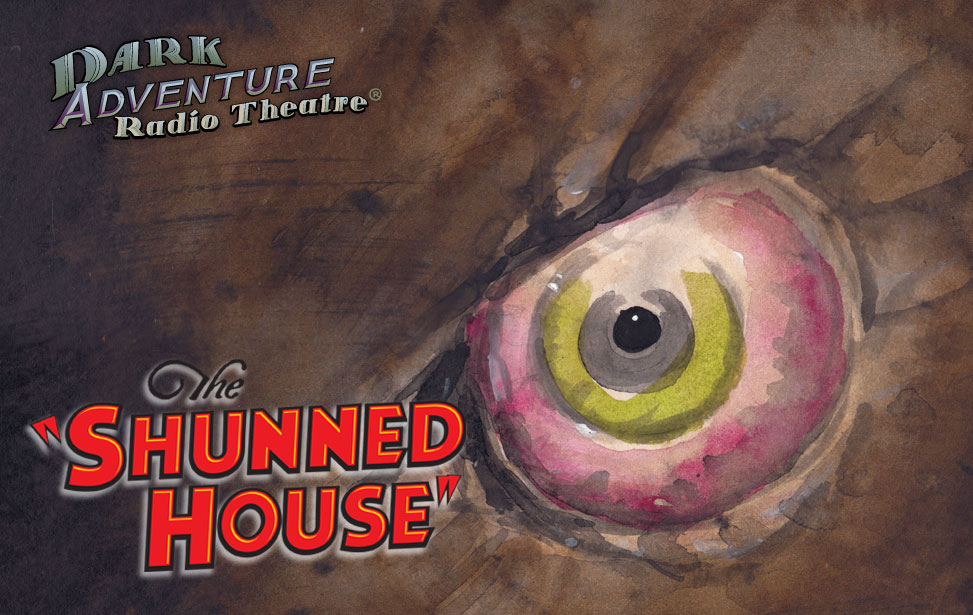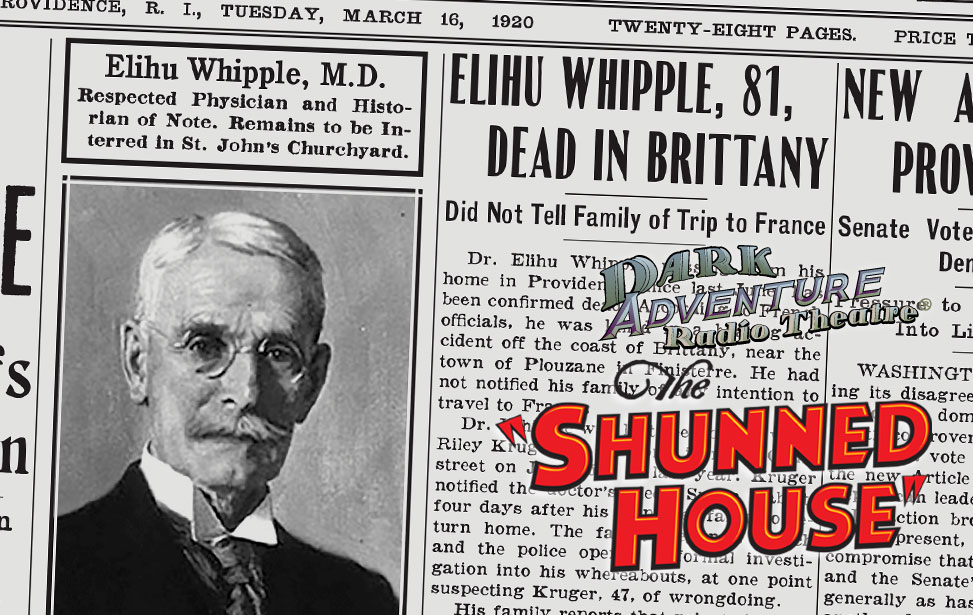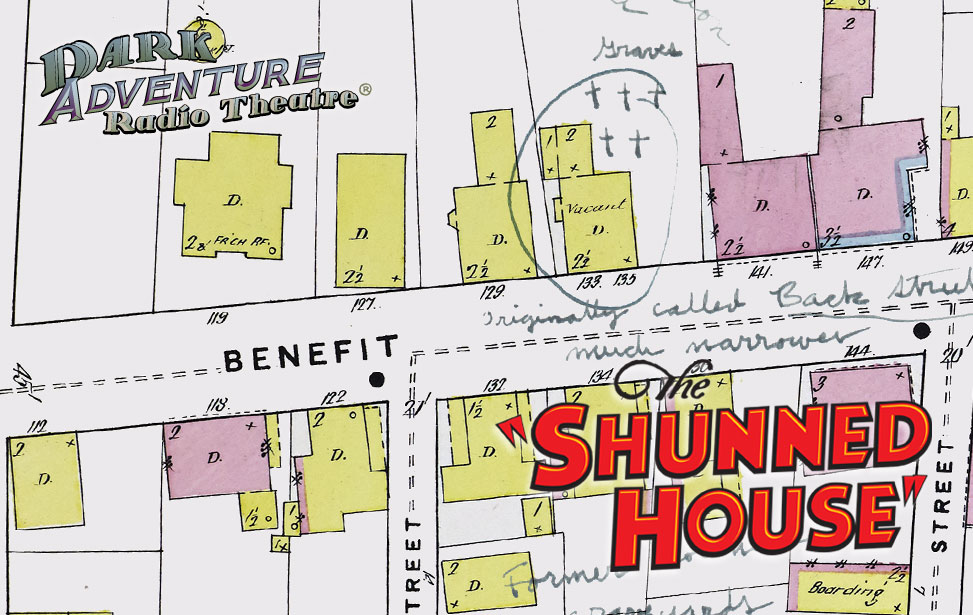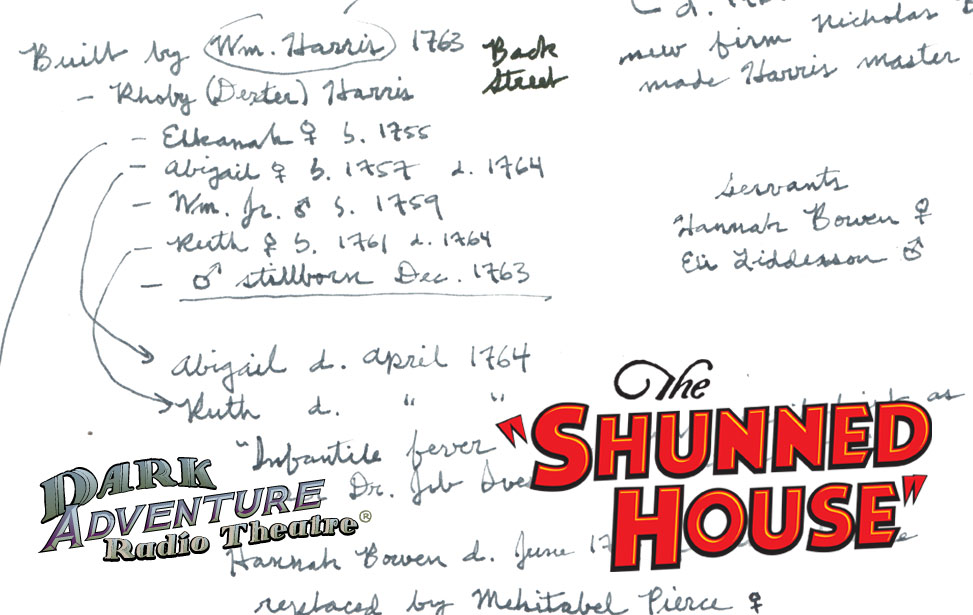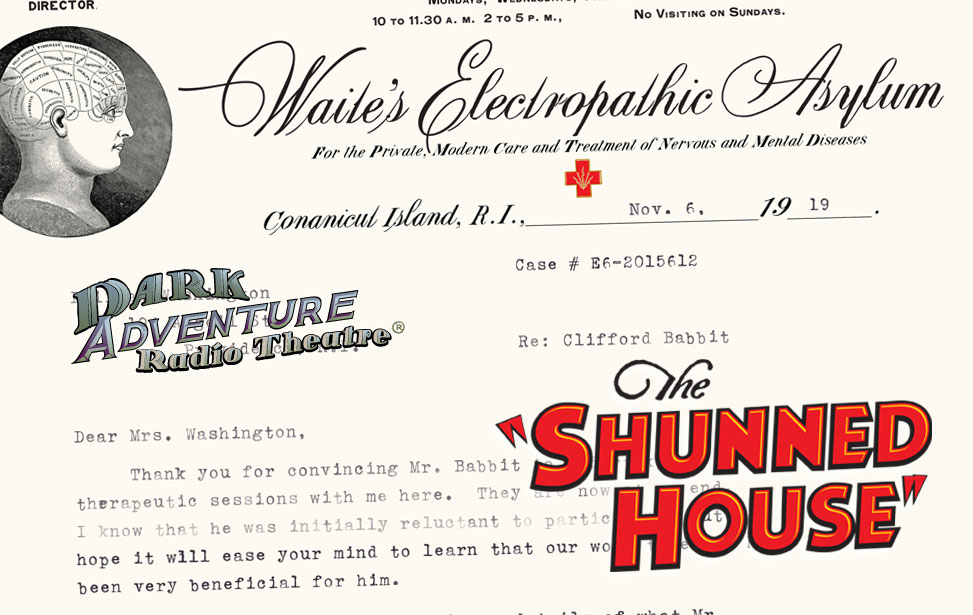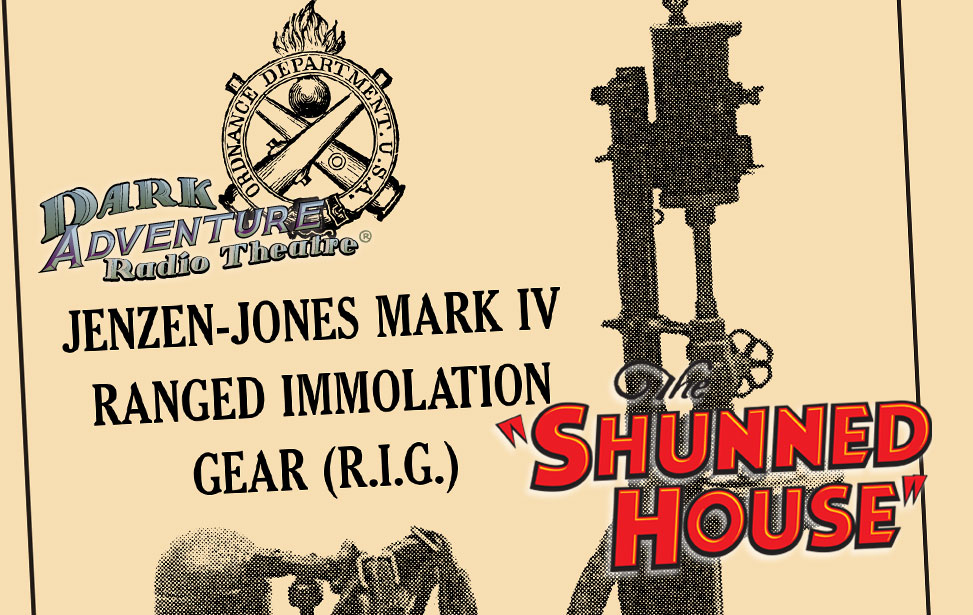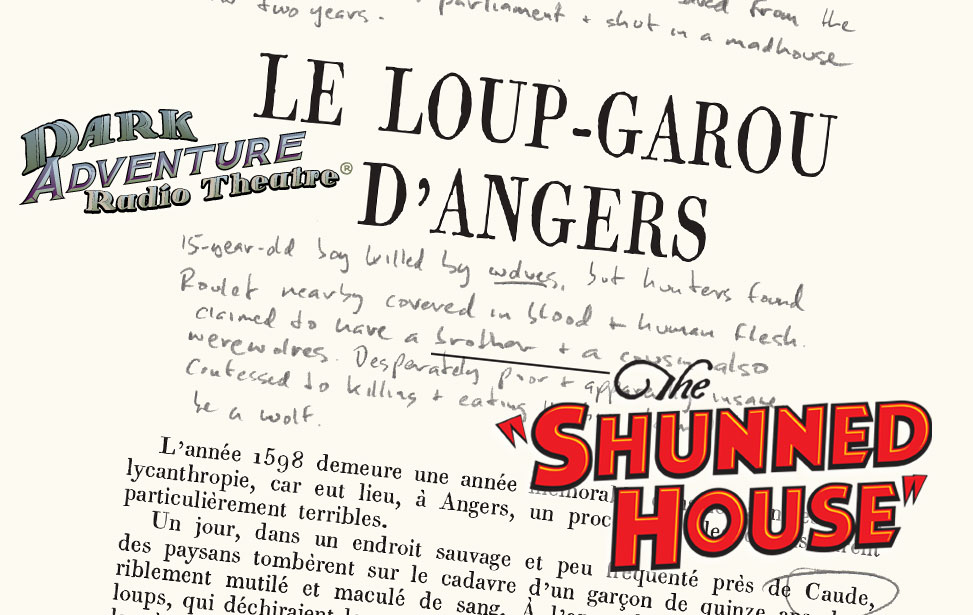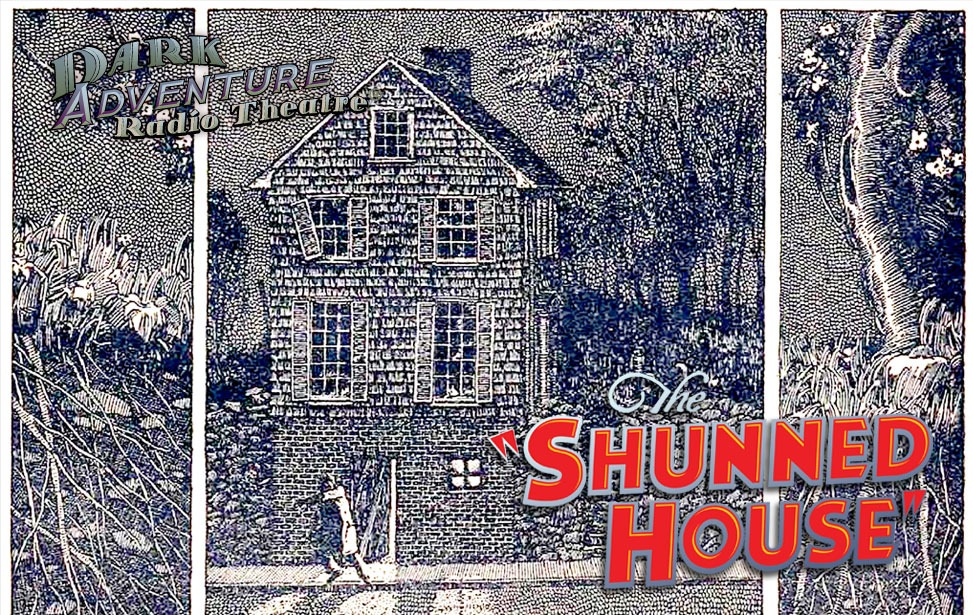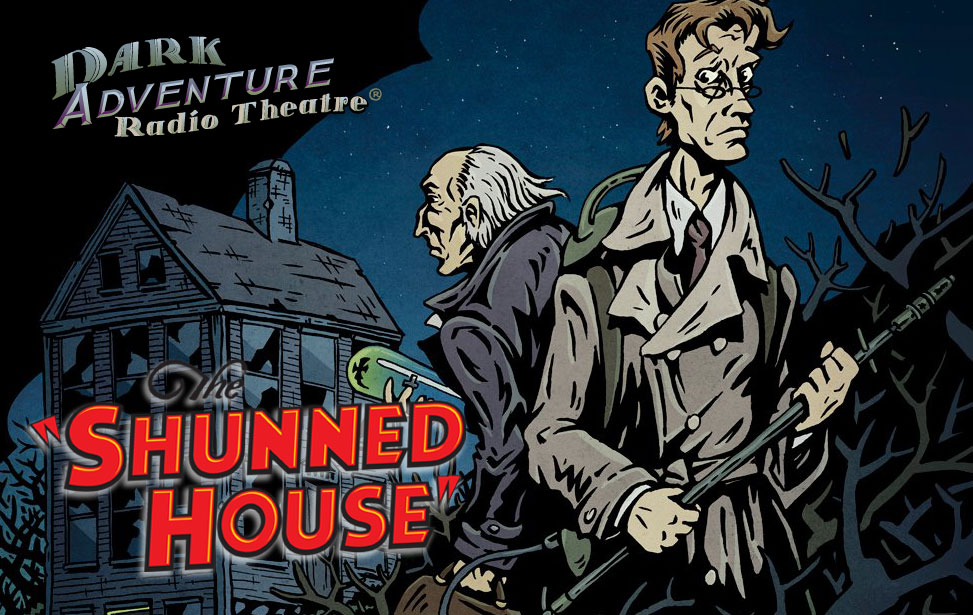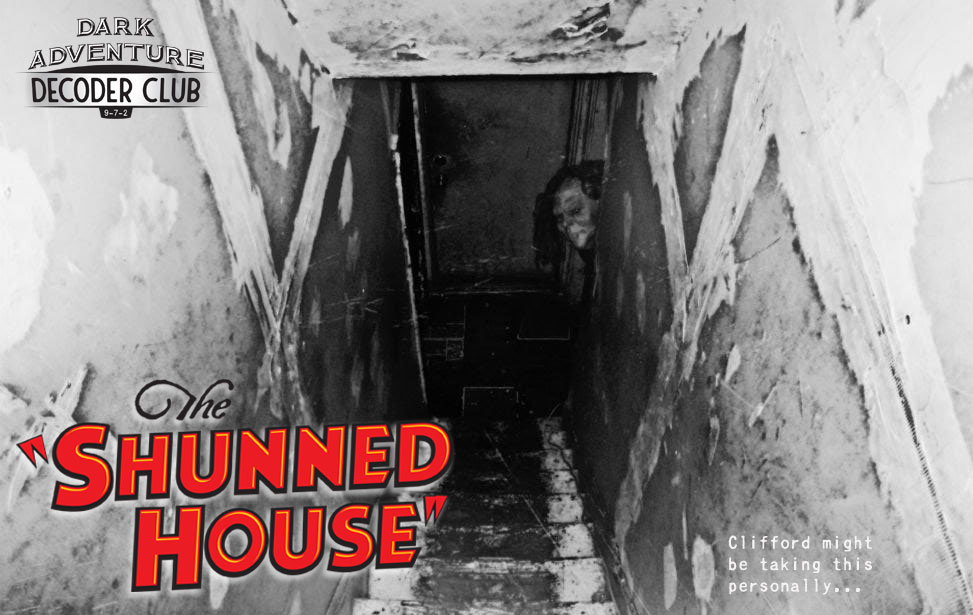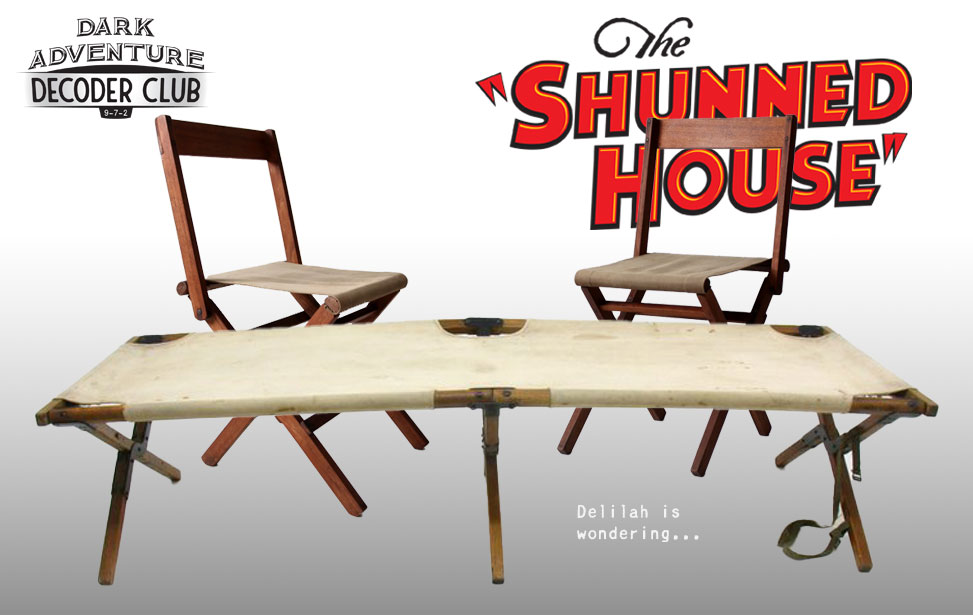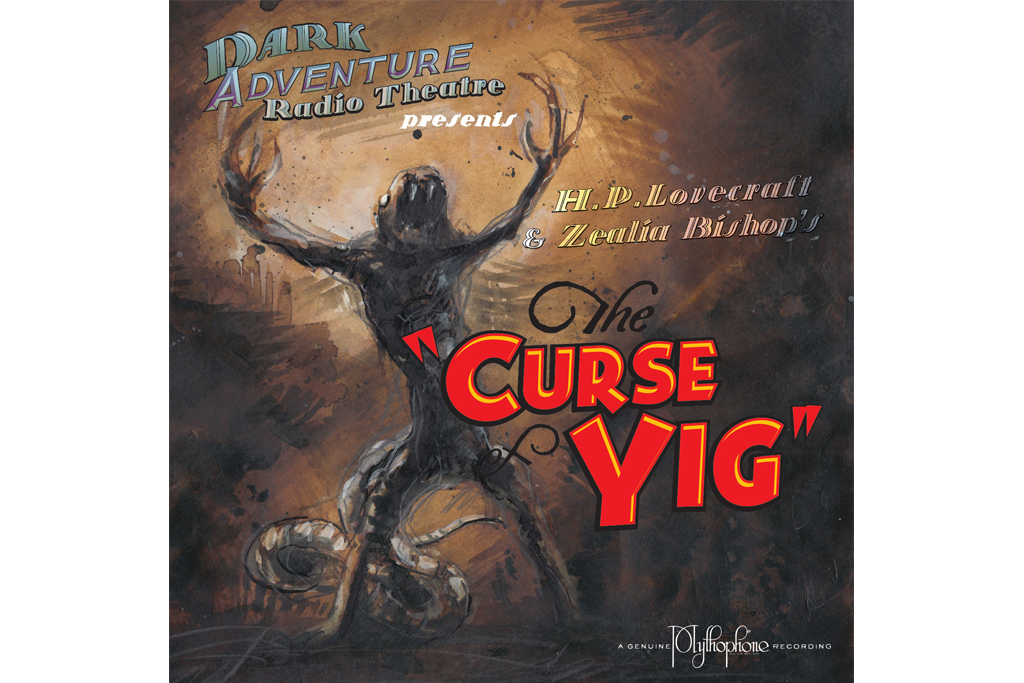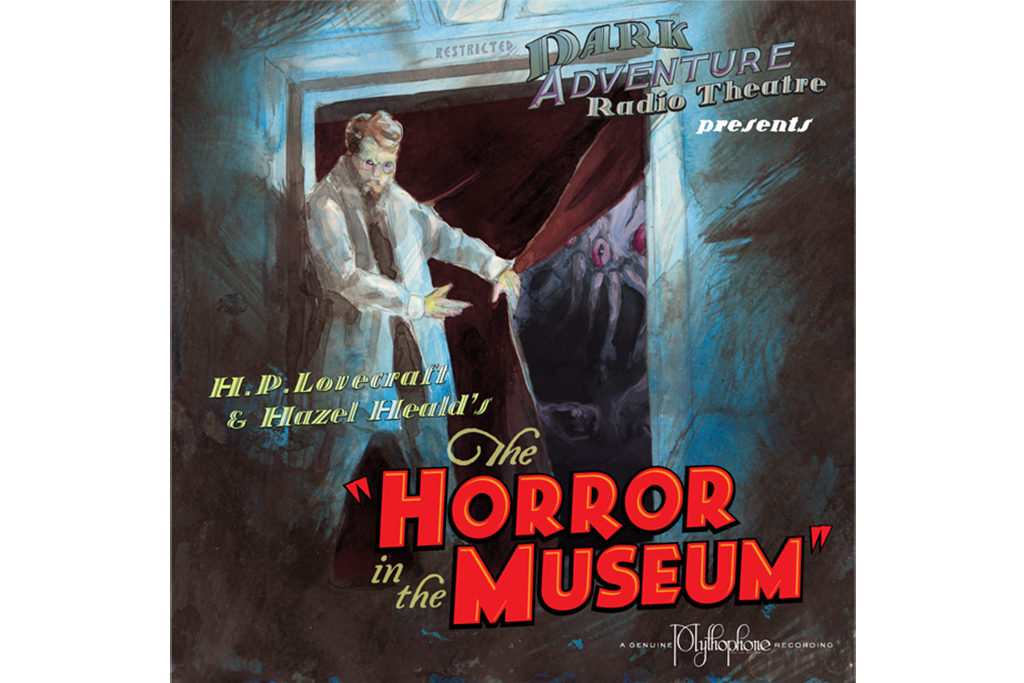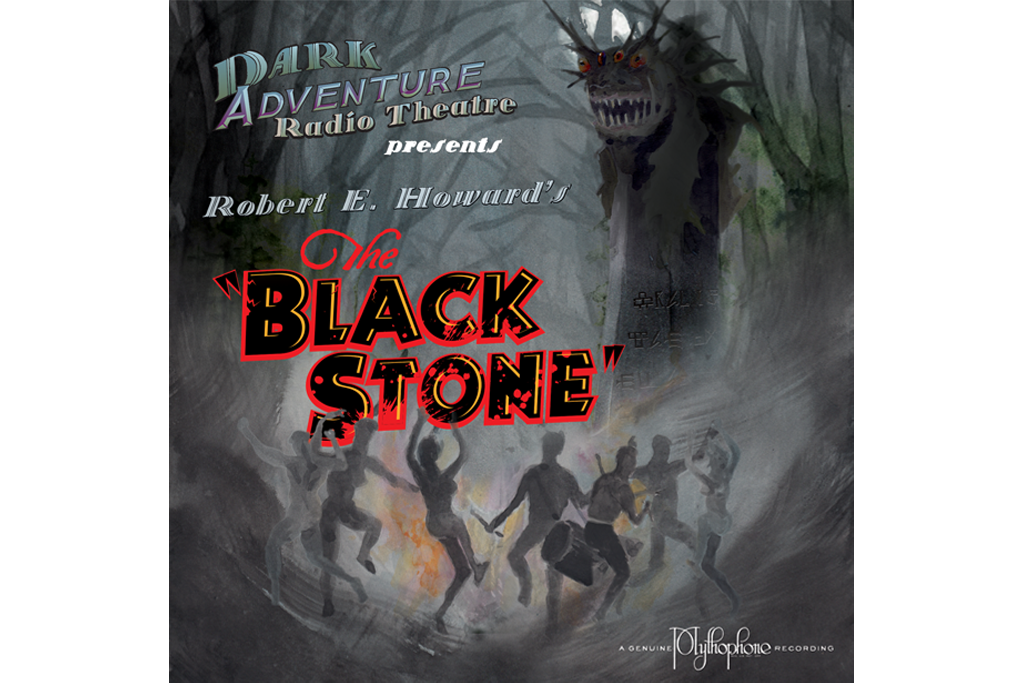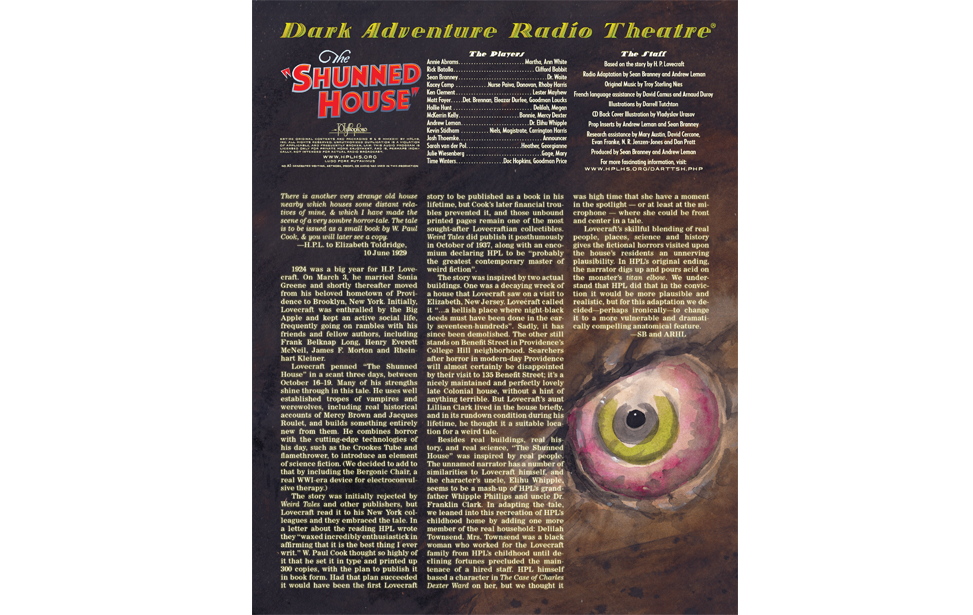The Shunned House
On picturesque College Hill in Providence, Rhode Island, an old colonial house has sat empty for decades. No one would consider renting the house with its long history of woes and unexplained deaths. Can a young man and his elderly great-uncle get to the bottom of the unspeakable causes of the house's affliction? Or will their investigation bring them face to face with an enduring evil? Yes to both.
HPL expertly combines real buildings, history, science and people into a tragic tale of horrific irony.
Get it now!Props
To enhance your listening pleasure, the HPLHS has packed the binder sleeve for The Shunned House with carefully created props from the story. You'll get:
Track Listing
1. Opening 4:13
2. The Memory 12:20
3. The Obsession 9:00
4. The Research 17:32
5. The Key 12:39
6. The Horror 17:36
7. Closing 1:11
Total Runtime 74:31
Cast and Crew
Annie Abrams...Martha, Ann White
Rick Batalla...Clifford Babbit
Sean Branney...Dr. Waite
Kacey Camp...Nurse Paiva, Donovan, Rhoby Dexter
Ken Clement...Lester Mayhew
Matt Foyer....Detective Brennan, Eleazar Durfee, Goodman Loucks
Hollie Hunt....Delilah, Megan
McKerrin Kelly....Bonnie, Mercy Dexter
Andrew Leman...Dr. Elihu Whipple
Kevin Stidham...Niels, Magistrate, Carrington Harris
Josh Thoemke...Announcer
Sarah van der Pol....Heather, Georgianne
Julie Wiesenberg....Gage, Mary
Time Winters....Doc Hopkins, Goodman Price
Based on the story by H. P. Lovecraft
Written by Sean Branney & Andrew Leman
Original Music by Troy Sterling Nies
French language assistance by David Camus and Arnaud Duroy
Illustrations by Darrell Tutchton
CD back cover illustration by Vladyslav Yurasov
Prop Inserts by Andrew Leman & Sean Branney
Research assistance by Mary Austin, David Cercone, Evan Franke, N. R. Jenzen-Jones and Dan Pratt
No AI-generated writing, artwork, or music was used in the production of this episode. If any intelligence at all was deployed, it was the old-fashioned natural kind.
Produced by Sean Branney and Andrew Leman
Script, Liner Notes & More
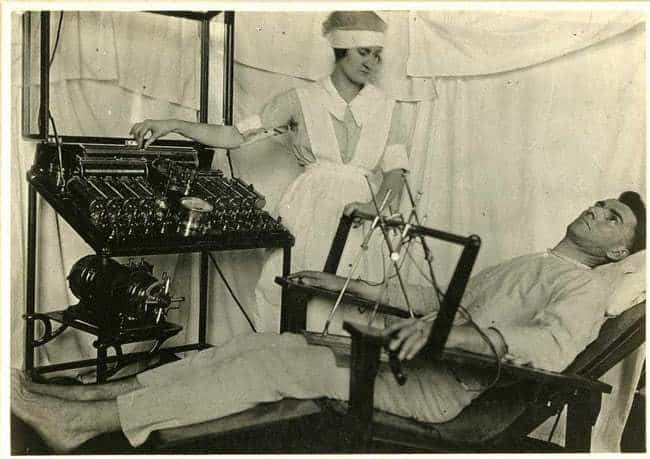 Physicians have been using electricity in their treatments since ancient times, when the Egyptians deployed electric Nile catfish to deal with epilepsy, chronic pain, and depression. Psychiatrists have been using man-made electricity in therapies since the mid-1700s, and even Benjamin Franklin wrote about it. We haven't been able to discover who invented the Bergonic Chair, but the photo above shows it in use around the time of World War I.
Physicians have been using electricity in their treatments since ancient times, when the Egyptians deployed electric Nile catfish to deal with epilepsy, chronic pain, and depression. Psychiatrists have been using man-made electricity in therapies since the mid-1700s, and even Benjamin Franklin wrote about it. We haven't been able to discover who invented the Bergonic Chair, but the photo above shows it in use around the time of World War I.
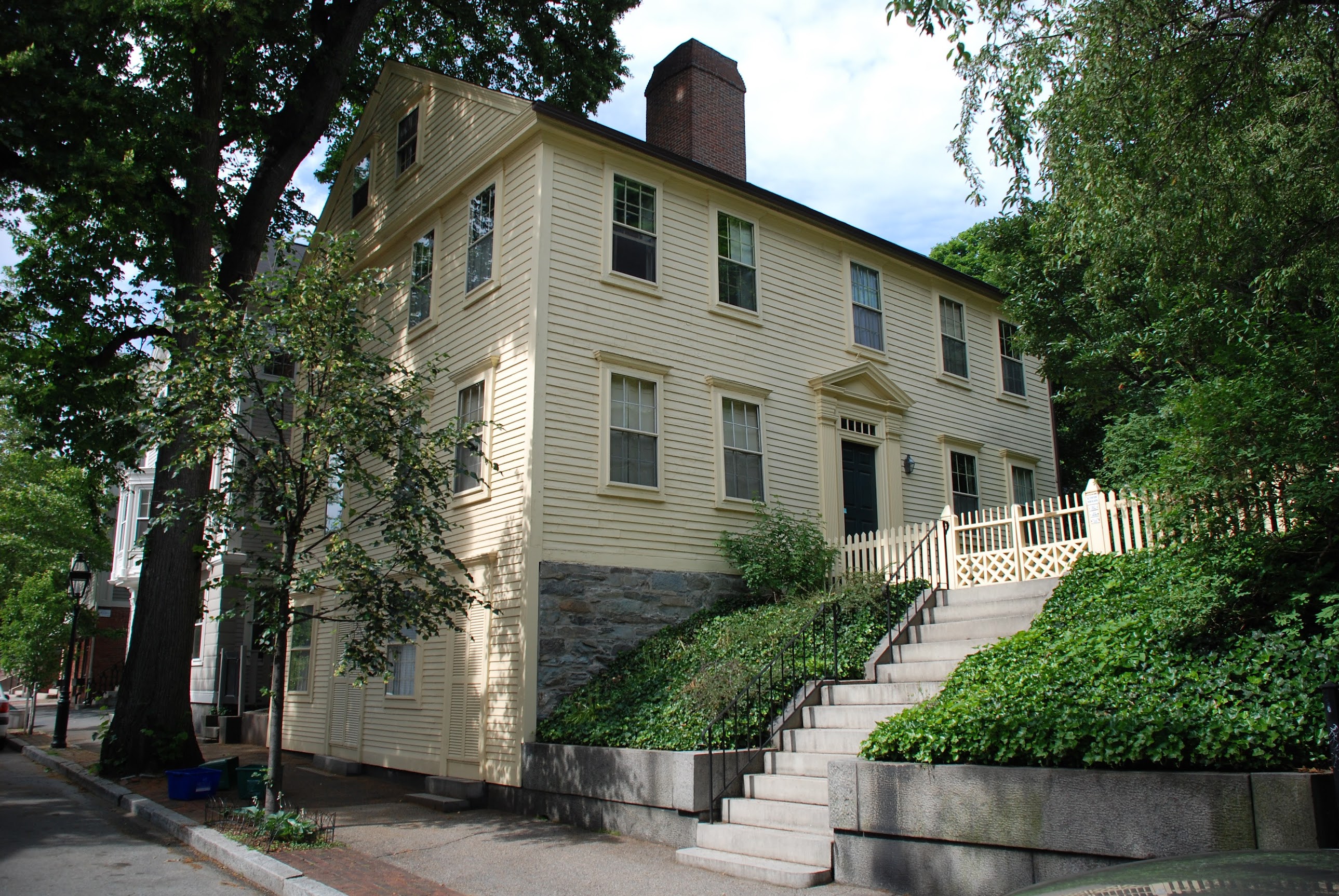
This perfectly lovely house is the one which, in part, inspired this story. Unlike the fictional version, it has never sat empty and abandoned, and Lovecraft's aunt Lillian lived there in 1919–1920, as the companion to Mrs. C.H. Babbitt. In the absence of any vampires, one interesting feature of the house is that the front door is situated on the side instead of facing the street. (Photo by Donovan Loucks: used with permission.)
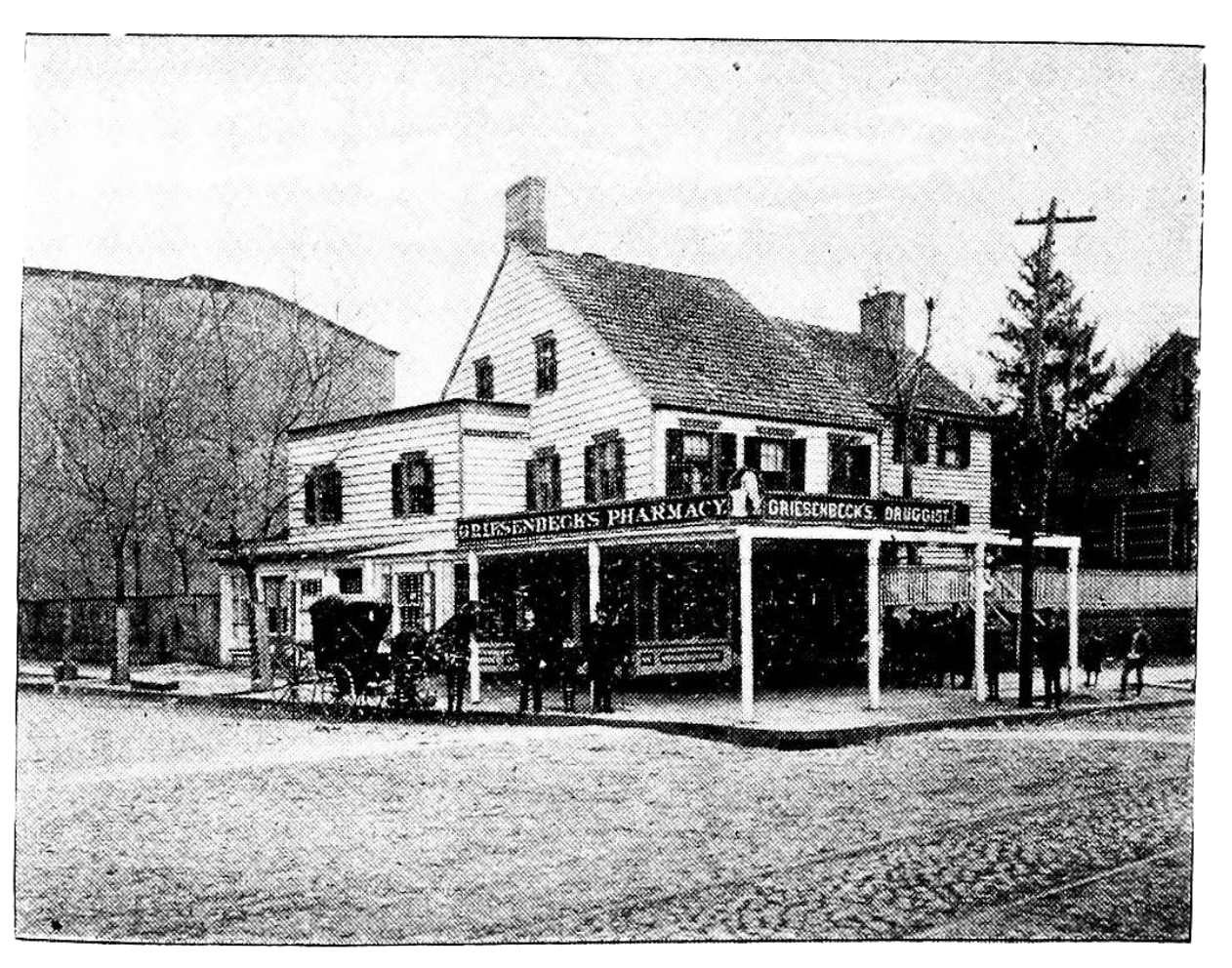
Lovecraft stated that the other house that served as inspiration for this story was located in Elizabeth, N.J. "on the northeast corner of Bridge St. and Elizabeth Ave". If HPL's description was accurate, that could make it this building at 1099 Elizabeth Avenue, which was a drugstore in HPL's day. Like the Providence house, it doesn't seem particularly ominous, but then again we don't all have Lovecraft's imagination. Donovan is researching other candidates, but pending those results, this is the building we think it was. A (presumably haunted) coffee shop now occupies this site. (Photo from The City of Elizabeth Illustrated, 1889. Thanks again to Donovan Loucks!)
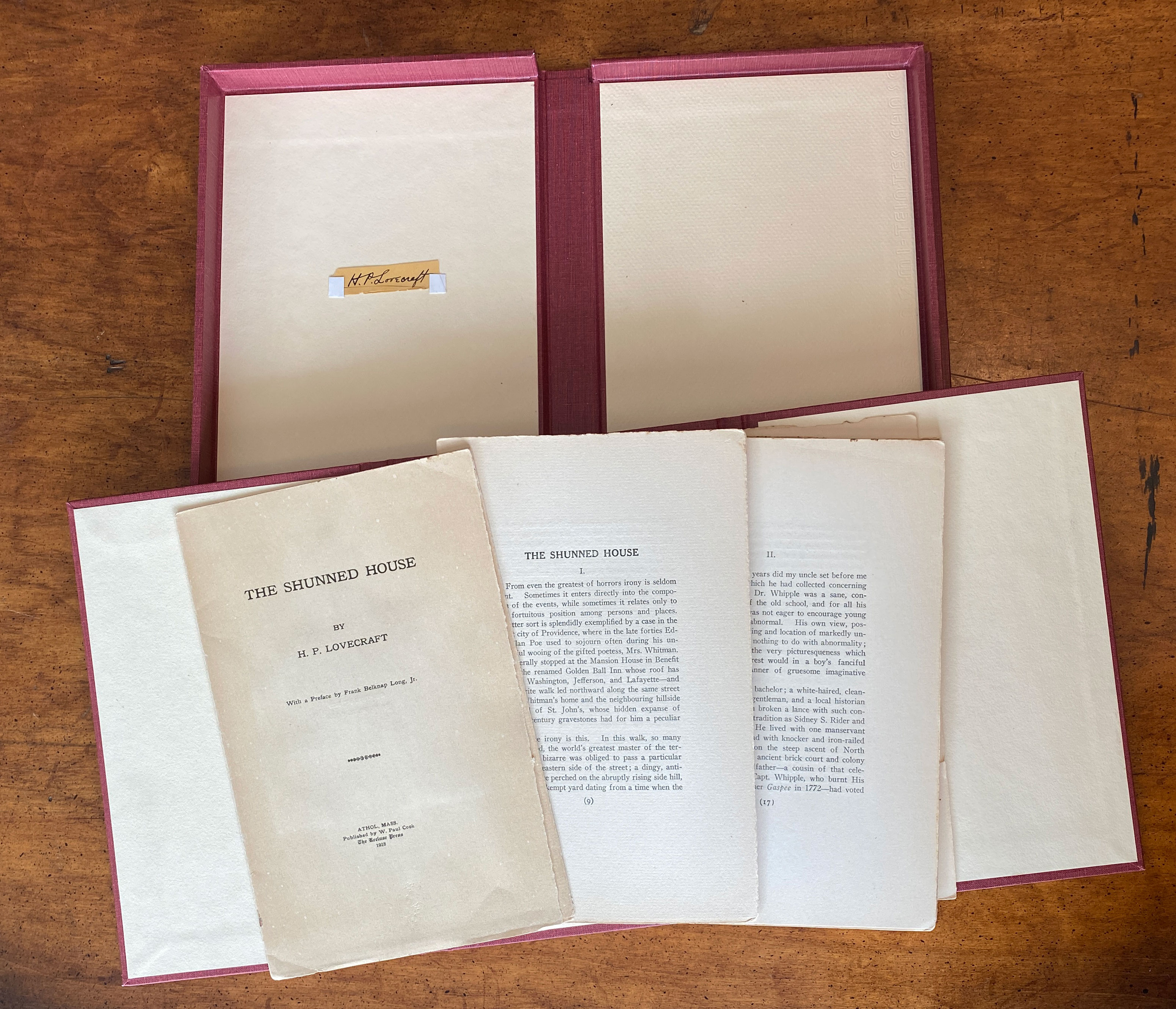 The HPLHS was lucky enough to be able to acquire one of the few surviving copies of the unbound first edition of "The Shunned House", with a preface by Frank Belknap Long, printed by W. Paul Cook's Recluse Press in Athol, Massachusetts in 1928, and it is now one of the treasures of the society's library. We have plans to help make it more widely available....
The HPLHS was lucky enough to be able to acquire one of the few surviving copies of the unbound first edition of "The Shunned House", with a preface by Frank Belknap Long, printed by W. Paul Cook's Recluse Press in Athol, Massachusetts in 1928, and it is now one of the treasures of the society's library. We have plans to help make it more widely available....
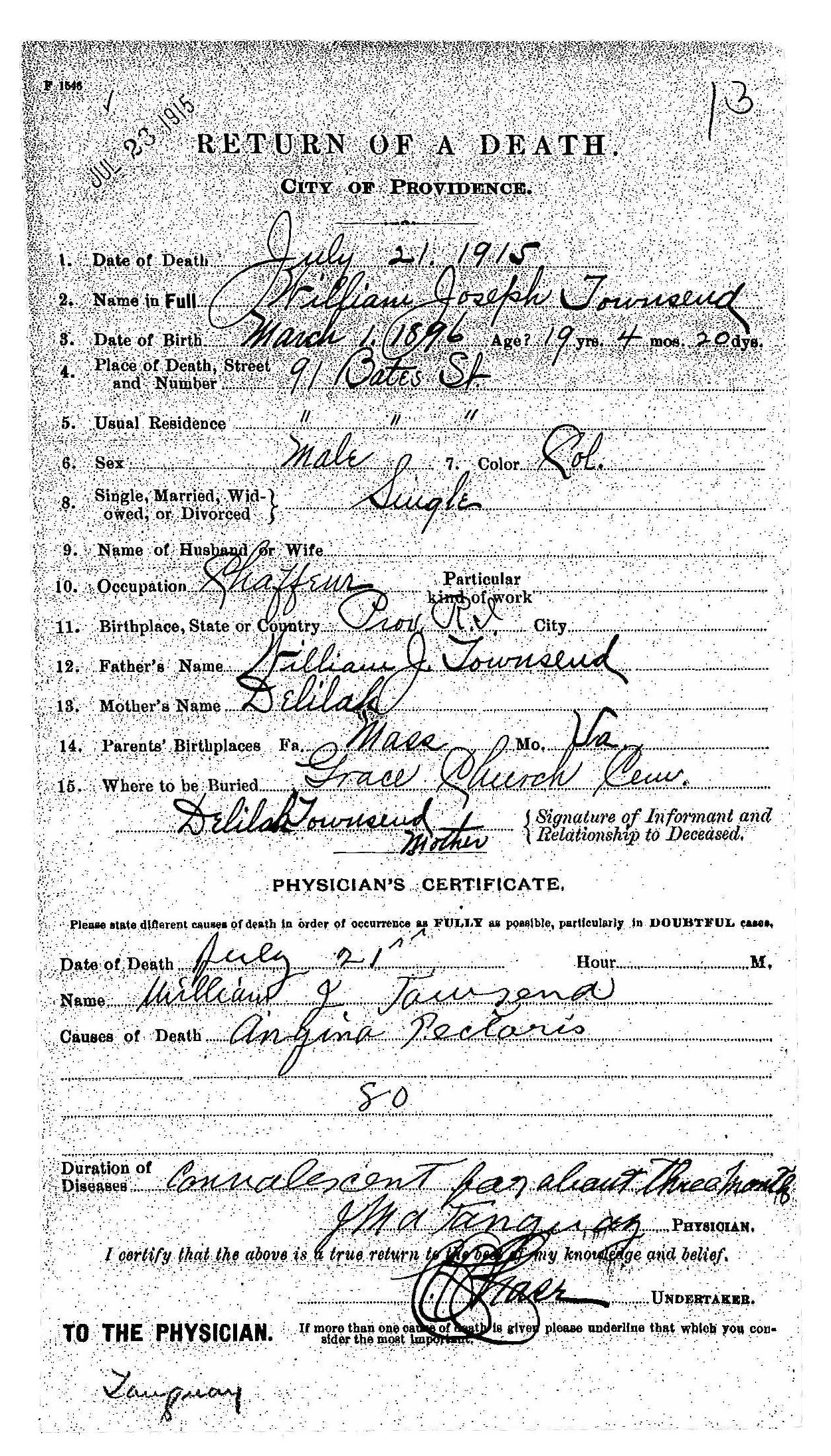 The character of Delilah is inspired by Delilah Townsend, who worked for the Phillips/Lovecraft family when HPL was a boy. Delilah was born circa 1872 in Virginia, and died in Providence in 1944 at the Home for Aged Colored Women, established by Christiana Cartreaux Bannister in 1890 for retired Black women who had worked as domestic servants but had no family left to care for them. She had a son of her own, William, who was just a few years younger than HPL himself, but he died in 1915, as shown in his death certificate above. Lovecraft used her as the model for the character Hannah in The Case of Charles Dexter Ward, who with her husband Asa lived in the house in Olney Court previously occupied by Joseph Curwen. HPL doesn't give the characters a last name, and describes them only as "negro", "courteous" and "stout". We know from letters that Lovecraft had fond memories of Delilah from his youth, but he doesn't really mention her much as an adult. We know his aunts hired her from time to time in later life, and in May of 1930 HPL writes "Delilah will no doubt be useful" in helping Aunt Lillian around the house at 10 Barnes St.
The character of Delilah is inspired by Delilah Townsend, who worked for the Phillips/Lovecraft family when HPL was a boy. Delilah was born circa 1872 in Virginia, and died in Providence in 1944 at the Home for Aged Colored Women, established by Christiana Cartreaux Bannister in 1890 for retired Black women who had worked as domestic servants but had no family left to care for them. She had a son of her own, William, who was just a few years younger than HPL himself, but he died in 1915, as shown in his death certificate above. Lovecraft used her as the model for the character Hannah in The Case of Charles Dexter Ward, who with her husband Asa lived in the house in Olney Court previously occupied by Joseph Curwen. HPL doesn't give the characters a last name, and describes them only as "negro", "courteous" and "stout". We know from letters that Lovecraft had fond memories of Delilah from his youth, but he doesn't really mention her much as an adult. We know his aunts hired her from time to time in later life, and in May of 1930 HPL writes "Delilah will no doubt be useful" in helping Aunt Lillian around the house at 10 Barnes St.
For what we do know, our profound thanks go to Donovan Loucks, Evan Franke and Dan Pratt, who scoured public records, city directories, grave registries and other sources for any traces of her.
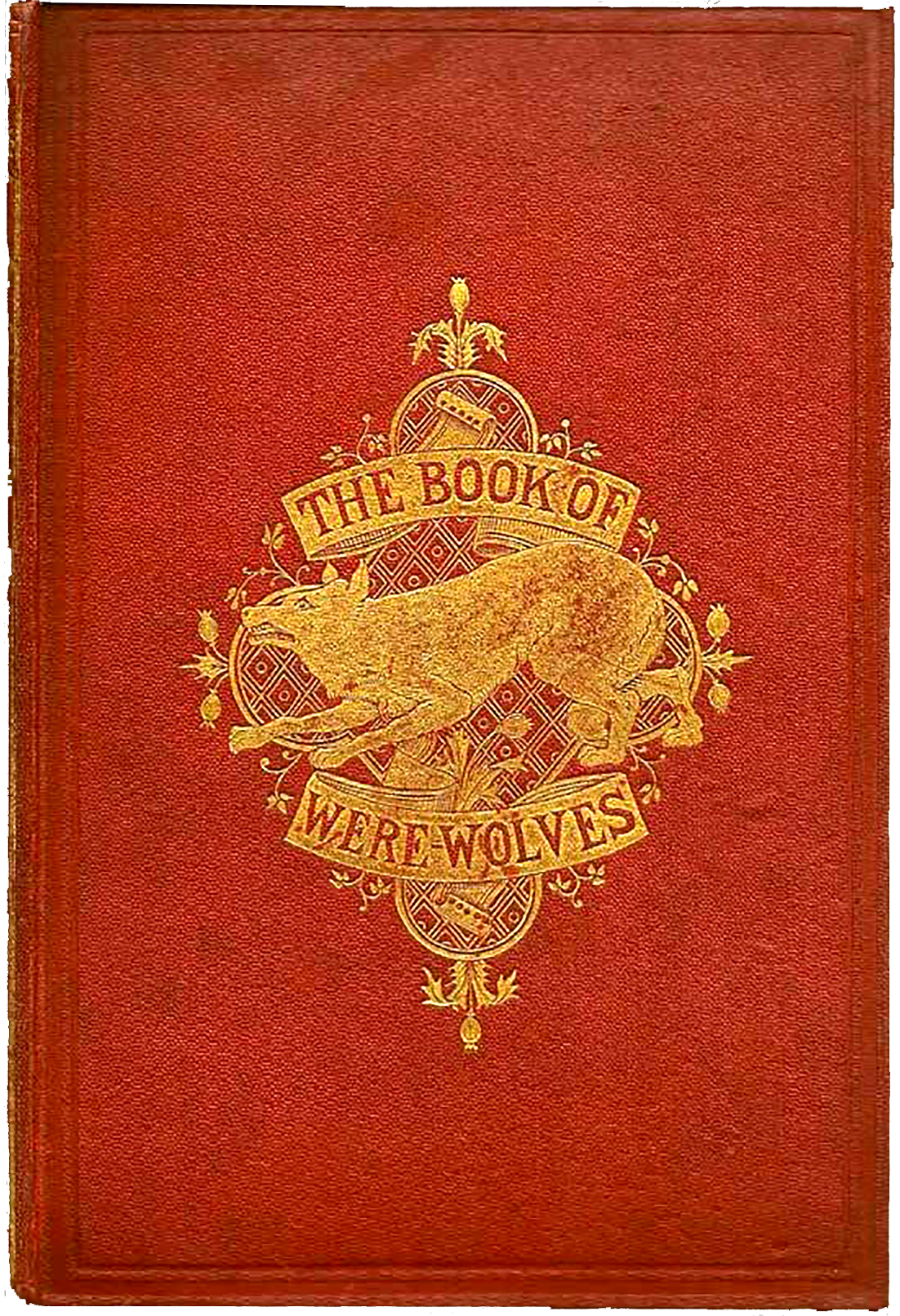 HPL drops the name of Jacques Roulet, who really was accused of being a werewolf in Caude, France in 1598. The case was described by Sabine Baring-Gould in The Book of Were-Wolves (1865). We know HPL read this book, but not until after he wrote this story, and it seems he learned of Roulet in Myths and Myth-Makers (1872) by John Fiske, who was himself quoting Baring-Gould.
HPL drops the name of Jacques Roulet, who really was accused of being a werewolf in Caude, France in 1598. The case was described by Sabine Baring-Gould in The Book of Were-Wolves (1865). We know HPL read this book, but not until after he wrote this story, and it seems he learned of Roulet in Myths and Myth-Makers (1872) by John Fiske, who was himself quoting Baring-Gould.
Listeners who pre-ordered their copies of this episode got a bonus prop featuring the tale of Jacques Roulet as told in the pages of Revue des Deux Mondes, itself a real French academic journal that has been published continuously for almost 200 years now and is still going. For those who can't easily read French we are pleased to offer an English version of that very prop HERE.
HPL makes reference in this story to the notorious vampires of Exeter, Rhode Island. Most famous was the tragedy of the family of George Brown in the late 1880s. His wife, Mary Eliza, contracted tuberculosis and died, followed shortly thereafter by their eldest daughter, Mary Olive. In 1891, daughter Mercy and son Edwin also contracted the disease, and Mercy died. Friends and neighbors of the family believed that one of the dead family members must be a vampire and had caused Edwin's illness, in accordance with contemporary folklore. Tuberculosis was a poorly understood condition at the time and the subject of much superstition.
George Brown was persuaded to give permission to exhume several bodies of his family members. Villagers, the local doctor, and a newspaper reporter exhumed the bodies on March 17, 1892. The bodies of both Mary and Mary Olive exhibited the expected level of decomposition, so they were thought not to be the cause. However, Mercy's corpse exhibited almost no decomposition, and still had blood in the heart. This was taken as a sign that the young woman was undead and the agent of young Edwin's condition. Her lack of decomposition was more likely due to her body being stored in freezer-like conditions in an above-ground crypt during the two months following her death.
As superstition dictated, Mercy's heart and liver were burned, and the ashes were mixed with water to create a tonic and was given to the sick Edwin to drink, as an effort to restore his health and stop the influence of the undead. He died two months later. What remained of Mercy's desecrated body was buried in the cemetery of the Baptist Church in Exeter. In the end, the father, George Brown, was one of very few never to contract tuberculosis, living until 1922, almost long enough to read Lovecraft's story.
Poor Mercy Brown was not the only person to be suspected of vampirism. There was a whole New England Vampire Panic!
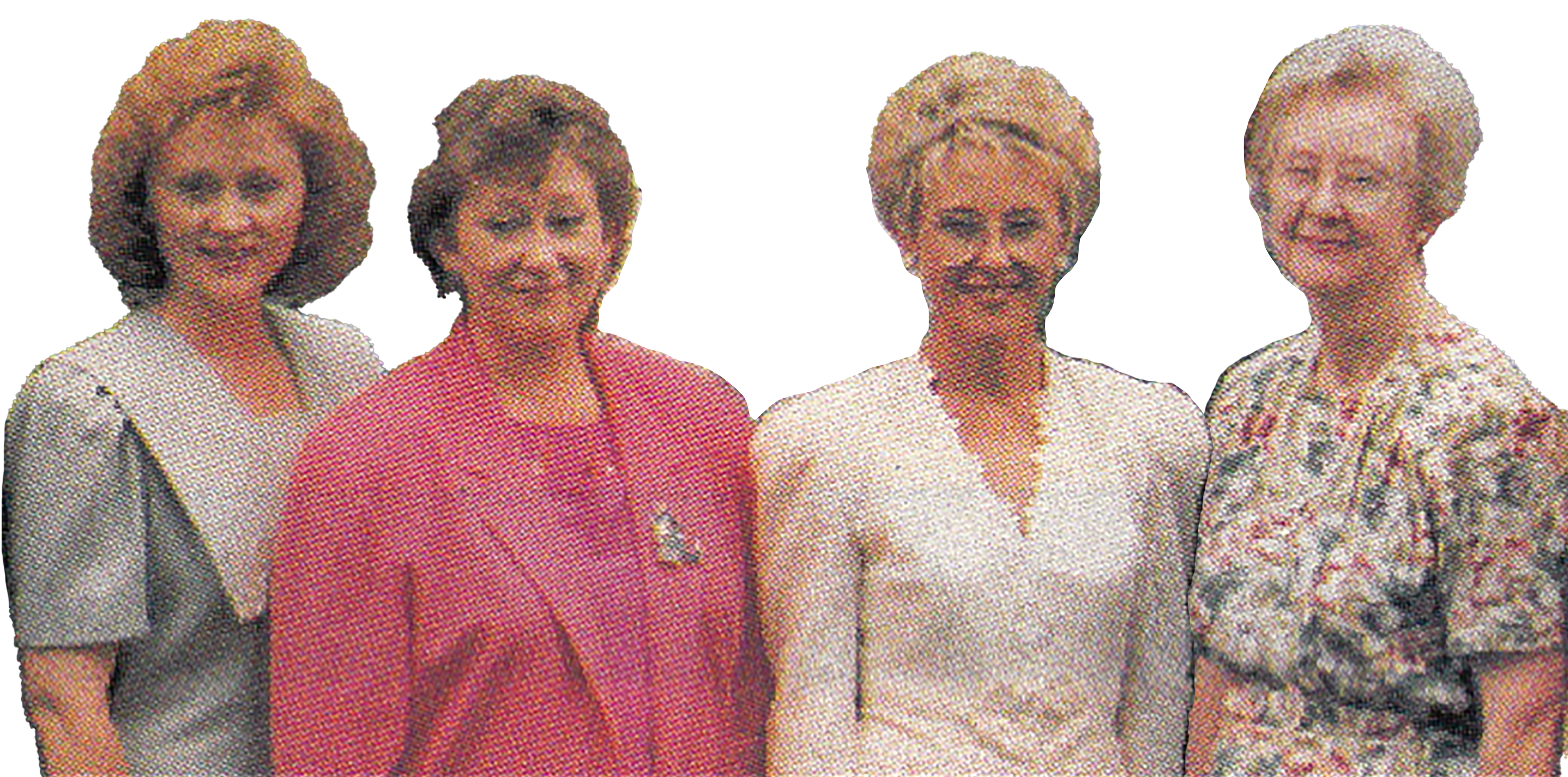 Except for Ann White, all the characters in the quilting bee scene in this episode are named after Andrew's sisters and mother. His mother, Bonnie Leman, was the founder and editor-in-chief of Quilter's Newsletter Magazine from 1969 until her retirement in 1995, at which point her daughter Mary Leman Austin took over as editor. All of the Leman women worked at the magazine (as did all the Leman men) in various capacities. It was at the offices of Leman Publications that the nascent HPLHS first published Strange Eons, our original monthly journal, and the Society owes a lot to Bonnie. Pictured above from left to right are Georgianne, Mary, Megan, and Bonnie.
Except for Ann White, all the characters in the quilting bee scene in this episode are named after Andrew's sisters and mother. His mother, Bonnie Leman, was the founder and editor-in-chief of Quilter's Newsletter Magazine from 1969 until her retirement in 1995, at which point her daughter Mary Leman Austin took over as editor. All of the Leman women worked at the magazine (as did all the Leman men) in various capacities. It was at the offices of Leman Publications that the nascent HPLHS first published Strange Eons, our original monthly journal, and the Society owes a lot to Bonnie. Pictured above from left to right are Georgianne, Mary, Megan, and Bonnie.
There are a lot of quilting patterns based on or inspired by houses, including the traditional Log Cabin and the Schoolhouse. Not a single one of them is shunned.
For your enjoyment, we present free PDF downloads of the final recording script and liner notes of "The Shunned House". Note: this script is only for use for reading along with Dark Adventure Radio Theatre®; no publication or performance of the script may be made without written consent of the HPLHS.

